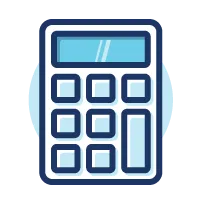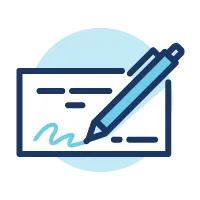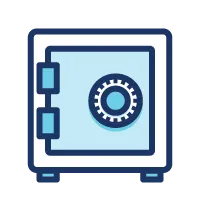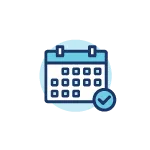Sometimes taking on debt is unavoidable. If you want to earn a college degree or you're ready to buy a home, you're likely signing up for years of making payments toward debt. While paying off debt fast sounds dreamy, simply learning how to manage your debt is key to keeping it from getting out of control.
Here you'll learn why debt management is important, how to pay it off and some tips for keeping debt under control.
Determine How Much Debt You Have
First, it's important to have a clear picture of how much debt you have. Make a list of all your outstanding debts and note the interest rate on each. Also take note of your monthly minimum payment for each debt and plug those numbers into your monthly budget.
Know Your Debt-to-Income Ratio
How well you manage your debt can contribute to whether or not you receive loans when you need them. Lenders look at your debt-to-income (DTI) ratio, the amount of debt you have compared to your monthly income, when extending new credit.
Having a lower debt-to-income ratio shows lenders that you are likely able to manage your monthly debt payments well. It is best advised to keep your DTI ratio under 35%.
To calculate your DTI, add up your monthly debt payments and divide them by your gross monthly income – the amount you earned before taxes and deductions are taken out.
For example:
Let's say your total monthly debt payments add up to $2,800:
Mortgage
$1,600
Car loan
$500
Credit cards
$500
Student loan
$200
Total Monthly Debt Payments
$2,800
And your gross monthly income is $6,500. Here's how to find your DTI:
$2,800
$6,500
0.43
Your DTI is 43%.
Pick Your Debt Payoff Strategy
Now that you know exactly what you owe, it's time to determine your strategy for how you'll pay it off. The following strategies will help you pay off debt faster, and, most importantly, help you learn how to manage debt so it doesn't spiral out of control.
Debt Snowball Method
The Debt Snowball method is a strategy to pay off debt in order of the smallest balance to the largest balance, while ignoring the interest rates.
How the Debt Snowball Debt Payoff Strategy Works
- List all your non-mortgage debt in order from smallest to largest balance, ignoring all interest rates.
- Make minimum payments on each debt on your list.
- Throw any extra dollars you possibly can at the smallest debt.
- When the smallest debt is paid in full, apply the amount you were paying towards the smallest debt to the next debt on your list.
- Rinse and repeat until all debt is paid off.
Why the Debt Snowball Debt Payoff Strategy Works
When you utilize the Debt Snowball method, you begin to change your behavior with money.
For most people facing debt, money is a constant stress in their lives and the one thing they haven't felt in a long time is a financial win. However, when you line up your debts from smallest to largest and pay off that smallest one fast, you get a win.
After your first win, the snowball rolls over into the next debt and sooner than later you will have that one knocked out as well.
The debt snowball works so well because every time you pay off a debt, it builds hope, increases motivation, and helps you push through the last large and final debt until you reach debt freedom.
Debt Avalanche Method
If you have trouble ignoring the interest rates on your debt, then the Debt Avalanche method may be for you.
Like the Debt Snowball, the Debt Avalanche lists your debt in order, but this time the focus is entirely on the interest rates.
How the Debt Avalanche Debt Payoff Strategy Works
- List all your non-mortgage debt in order from highest to lowest interest rate.
- Make minimum payments on each debt on your list.
- Throw any extra dollars you possibly can at the highest interest debt first.
- When the first debt is paid in full, apply the amount you were paying towards the smallest debt to the next debt on your list.
- Rinse and repeat until all debt is paid off.
Pros and Cons of Debt Avalanche
The main advantage of the Debt Avalanche is focusing on the highest interest debt first, which may also save you the most money in the long run.
However, you must be extremely disciplined if your highest interest debt is also one of your larger balances to pay off. When this happens, it takes much longer to pay off your first debt, thus holding you back from getting your first real win by knocking out that initial debt.
6 Tips on How to Manage Debt
- Create a budget and stick to it.
Budgeting is critical to managing and paying off your debt in a way that ensures your credit score stays healthy. When you have a plan for where your money goes, you won't end up missing payments. Create a budget so you can see where you might be overspending and maybe even how you can add more to your monthly debt payments. - Make your payments on time.
Payment history makes up 35% of your credit score. Your credit can take a big hit from missing a payment, so make sure you have what you need to make your payments on time each month. Credit reports will track if you are 30, 60, or 9 days late on payments. - Avoid taking on debt unless absolutely necessary.
Adding more debt to your plate can make it difficult to manage. Only apply for new credit if you absolutely need it when you are already working to manage your debt. - Increase your income if you can.
If you can freelance or take on side gigs, you can use that extra income toward your debt to help your budget spread further. It may be hard work, but it will help you feel more in control of your finances. - Make more than the minimum monthly payment.
Paying more than the minimum balance each month will save you money on interest in the long run and help you pay down your debt faster. - Automate your debt payments.
Set up your monthly debt payments as automatic withdrawals on the same day each month so you never miss a payment and you're committed to paying that amount, if it's over your minimum, each month. This way you won't think twice about how much to pay and you won't risk missing the due date.
No matter what kind of debt you have, these tips will help you stay on top of it so you can feel in control of your money.
Learning how to manage debt will help you feel more in control of your finances for the long haul, even if you're paying off debt for years to come. Managing debt is key to maintaining a healthy credit score and being approved for loans. However, you choose to tackle your debt, whether through the Debt Snowball or Debt Avalanche, be sure to never miss a payment and pay more than the minimum payment whenever you can.
Key Takeaways
- Sticking to a budget is key to managing debt.
- Paying off high-interest rate debt first will save you the most money in your debt payoff strategy and decrease your total debt amount faster.
- Making your payments on time is important for maintaining or building your credit score.
- Having an emergency fund can help you avoid using credit cards for unexpected expenses and putting you further into debt.
APR = Annual Percentage Rate












